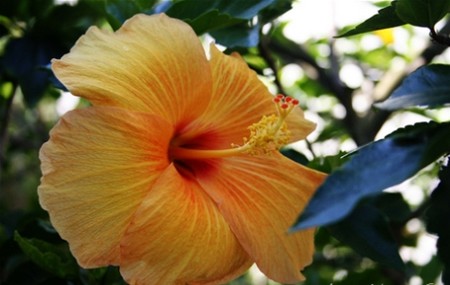The Hibiscus, a large genus of malvaceous plants (herbs, shrubs, and trees), mostly from tropical countries; the Rose-mallows, can easily be grown in your own garden. Hibiscus improves the quality of the garden as it is an insect-repellant plant. They are very strong plants. If your Hibiscus starts crowding your porch, you can transplant the plant on any other area. Transplanting should be done with care. If you have not hired a gardener you can easily do the procedure of transplant by yourself.
You should determine the appropriate patch of soil for your Hibiscus transplant. Remember that sunlight must be available in the area from 8 to 10 hours. Strong winds should not reach the area.
Make the soil smooth and tilt it. This is very important for the growth of Hibiscus. When the soil particles will be broken, this will create space for air and water in the soil and the plant will become enriched with nutrients from the soil with water. Aeration will also increase by this. Special mulch should also be added in the soil.
You may cut the one-third part of your Hibiscus plant. By trimming, more of the plant will come out of the soil.
You can dig a ditch; almost 12 inches from the trunk. If you will dig near the plant roots are liable to damage. Root ball is the area of the plant where most root system of the plant is present. Find it. Afterwards make space around the root ball to such an extent that the plant may become loose.
Extract the plant with the help of a shovel. This should e done slowly and no extraordinary pressure must be applied. Do not remove the soil adsorbed to the roots instead keep it in its original place.
Now dig the hole of same dimensions in the area, you have selected for the transplant. Put three inches fertilizer and water in the hole. Now put the plant into the hole. Add soil on it so that it may not be disturbed.
Water your plant at least 5-6 days after the transplant.
You should give appropriate attention to the Hibiscus transplant for more than a month or so. Determine the color and posture of your plant to help it grow more adequately. You will find relief when your Hibiscus will grow older and you may tell your friends about this adventure. If there is any sign of damage, try another area but I must say don’t let it go in the prevailing manner.
